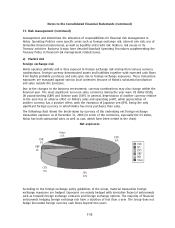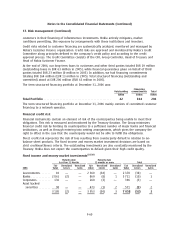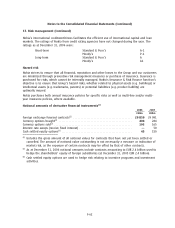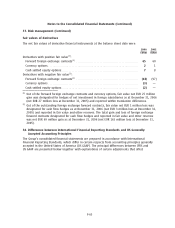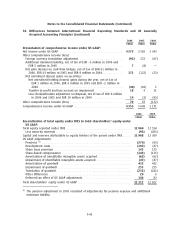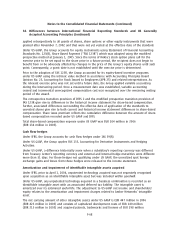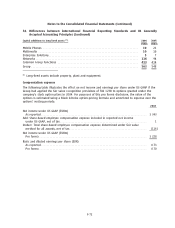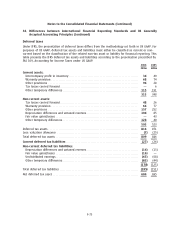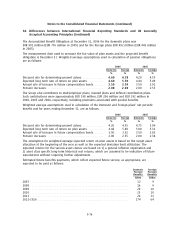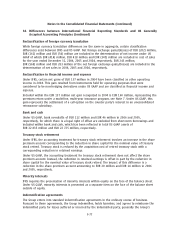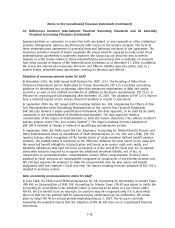Nokia 2006 Annual Report Download - page 203
Download and view the complete annual report
Please find page 203 of the 2006 Nokia annual report below. You can navigate through the pages in the report by either clicking on the pages listed below, or by using the keyword search tool below to find specific information within the annual report.Notes to the Consolidated Financial Statements (Continued)
38. Differences between International Financial Reporting Standards and US Generally
Accepted Accounting Principles (Continued)
applied retrospectively to all grants of shares, share options or other equity instruments that were
granted after November 7, 2002 and that were not yet vested at the effective date of the standard.
Under US GAAP, the Group accounts for equity instruments using Statement of Financial Accounting
Standards No. 123(R), Share Based Payment (‘‘FAS 123R’’) which was adopted using the modified
prospective method at January 1, 2005. Since the terms of Nokia’s stock option plans call for the
exercise price to be set equal to the share price in a future period, the recipient does not begin to
benefit from or be adversely affected by changes in the price of the Group’s equity shares until such
point. Consequently, a grant date is not established until the exercise price is determined.
Prior to the adoption of FAS 123R, the Group accounted for its equitybased incentive programs
under US GAAP using the intrinsic value method in accordance with Accounting Principles Board
Opinion No. 25, Accounting for Stock Issued to Employees (APB 25) and related interpretations. As
the relevant exercise price was not set until a future date, the Group applied variable accounting
during the intervening period. Once a measurement date was established, variable accounting
ceased and incremental unrecognized compensation cost was recognized over the remaining vesting
period of the award.
The retrospective transition provision of IFRS 2 and the modified prospective transition provision of
FAS 123R give rise to differences in the historical income statement for sharebased compensation.
Further, associated differences surrounding the effective date of application of the standards to
unvested shares give rise to both current and historical income statement differences in sharebased
compensation. Share issue premium reflects the cumulative difference between the amount of share
based compensation recorded under US GAAP and IFRS.
Total sharebased compensation expense under US GAAP was EUR 204 million in 2006
(EUR 134 million in 2005).
Cash flow hedges
Under IFRS, the Group accounts for cash flow hedges under IAS 39(R).
Under US GAAP, the Group applies FAS 133, Accounting for Derivative Instruments and Hedging
Activities.
Under US GAAP, a difference historically arose when a subsidiary’s reporting currency was different
from Treasury Center’s reporting currency and external and internal hedge maturities were different
more than 31 days. For those hedges not qualifying under US GAAP, the unrealized spot foreign
exchange gains and losses from those hedges were released to the income statement.
Amortization and impairment of identifiable intangible assets acquired
Under IFRS, prior to April 1, 2004, unpatented technology acquired was not separately recognized
upon acquisition as an identifiable intangible asset but was included within goodwill.
Under US GAAP, any unpatented technology acquired in a business combination is recorded as an
identifiable intangible asset with an associated deferred tax liability. The intangible asset is
amortized over its estimated useful life. The adjustment to US GAAP net income and shareholders’
equity relates to the amortization and impairment charges related to Amber Networks’ intangible
asset.
The net carrying amount of other intangible assets under US GAAP is EUR 447 million in 2006
(EUR 425 million in 2005) and consists of capitalized development costs of EUR 149 million
(EUR 213 million in 2005) and acquired patents, trademarks and licenses of EUR 298 million
F68


